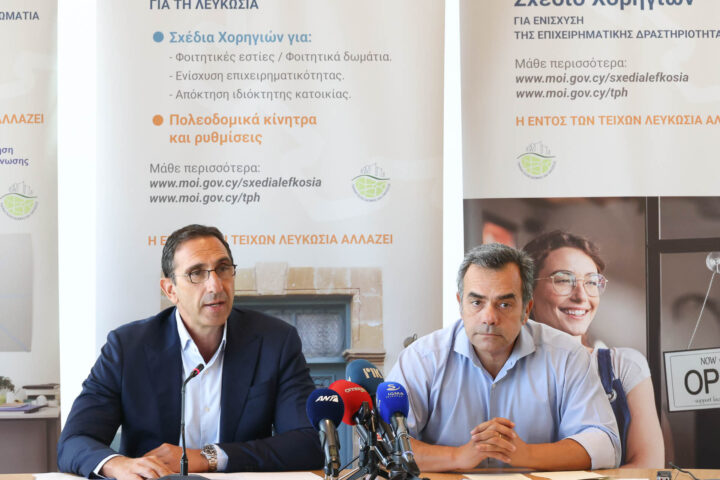By Andrie Kypridemo
As if the haircut on deposits required for the bail-in of banks in March 2013, and the credit constraints that brought Cyprus businesses to their knees, weren’t enough, just 7 years after another black March dawned further financial constraints came from Covid-19 measures.
Having reduced their operations to the very minimum or even being forced to close down for two months, these businesses are now called to continue ‘business as usual’ amidst the current market instability and an imminent global financial crisis.
The vast majority of businesses in Cyprus are family-run, and the entrepreneurs that support these, in fear of the stigma of failure, tend to recapitalize the business from personal lending.
This may be the case for non-viable businesses as well, thus leading in time to personal failure and individual bankruptcy.
It should not be a surprise that the younger generation is reluctant to start up a business being afraid of the stigma of bankruptcy.
This is not, however, the wise approach that a financially sophisticated business would adopt.
There are several debt and operational restructuring options available for these businesses to explore.
Simple restructuring solutions
Just like doctors that advise prevention is the best cure, a business should likewise check on its liquidity and take preventive restructuring measures to ensure its continuity.
There are various restructuring measures that Cypriot businesses may benefit from immediate relief solutions; partial debt restructuring offered by financial institutions; overall debt restructuring plans; debtor-friendly schemes; creditor friendly schemes; corporate reorganization; and schemes for the restructuring of personal and corporate debts combined.
The main categorization in restructuring tools though is between court-enforced schemes and out of court solutions.
The reason is that to determine which restructuring solution best suits your business, two critical questions should be answered: (1) Who is considering the restructuring? (2) Which stakeholder interests are likely to be impacted?
The answer to this will determine whether a simple out-of-court restructuring shall suffice, or whether it is likely the scheme would have to be imposed on certain stakeholders, in which case a court order will be required.
The first to identify the need for restructuring of any kind would be the board of directors of the business.
If the issue at hand is a temporary cash-flow constraint, which may have occurred due to some unexpected expense or loss of a contract, then the answer is out-of-court restructuring.
These solutions are simple and swift.
It can be short-term financing by the business’ main financial institution partner or partial debt restructuring, involving just one major creditor.
Such solutions may be initiated conversely by the financial institution against the business, had it identified that the overdraft has long been to the maximum amount available or a loan is in arrears.
Following the enforcement of the Arrears Management Directive by the Central Bank of Cyprus in 2015, the major financial institutions have utilized immensely these partial debt restructurings.
Judging though by the re-default rate following such debt restructurings (which by the end of 2019 was about 73%), it has become apparent that this solution was not best suited in most cases.
The reason is simple; it relates only to the debt owed to that financial institution, while all other debts of the business -taxes, contractors, service providers and so on- are not being restructured.
Therefore, it was not suited to businesses with long term financial constraints deriving from market instability, credit constraints or currency fluctuations.
This is not a solution either for businesses that may be facing additional operational issues, such as shareholder disagreements; management deficiencies; succession constraints; employees that are resilient to any change; or creditors with conflicting interests, such as franchisors whose goodwill is at stake or contractors with competitive advantages.
Which brings us to the second question to be addressed: which stakeholder interests are likely to be impacted? If these vary, then a more integrated solution should be sought.
Court restructurings
There are two schemes by which Cypriot companies may be put under restructuring by Court order: Reorganization, provided in section 198 of the Companies Law, and Examinership, provided in Part IVA of the same legislation.
Both may be initiated by the company, or any of its creditors or shareholders and, once approved by the majority, the restructuring plan can then be affirmed by Court order and be binding against all stakeholders.
The main difference between the two is that with Examinership the company will also benefit from a 4-month-long moratorium on all claims against the company by its creditors, which may be extended for a further 2 months.
This is to facilitate a period of negotiations between the company and its stakeholders, without undue pressure from creditors.
For the duration of this protection period, an insolvency practitioner will be appointed as Examiner of the company and will work, in collaboration with its board, to examine the company’s affairs to form a restructuring plan and getting it approved by its shareholders and creditors.
Examinership may also be applied simultaneously to a Personal Repayment Plan, which enables the restructuring of an entrepreneur’s personal debts.
This Coordinated Scheme is a unique tool facilitated by the Cyprus insolvency framework available only to micro-companies, that employ up to 10 persons only.
In a coordinated scheme, the insolvency practitioner who undertakes the role of Examiner will also develop a debt restructuring plan that will involve all of the personal financial obligations of the entrepreneur, including any taxes, charges and rental payments, while considering and reserving any amounts required for the entrepreneurs’ household living expenses.
Considering that this regulated restructuring procedure was non-existent in Cyprus’ insolvency law framework until 2015, it’s not a surprise that both entrepreneurs and consultants had initially viewed this with scepticism or even general disapproval.
It is indeed easier for someone to use and advise on the procedures they are already familiar with.
However, such procedures are not enough anymore in facilitating resilience to the unprecedented financial hardships and constraints that businesses are faced with in times of global recessions.
The writer is Manager, Baker Tilly Corporate Recovery (Cyprus) Limited










